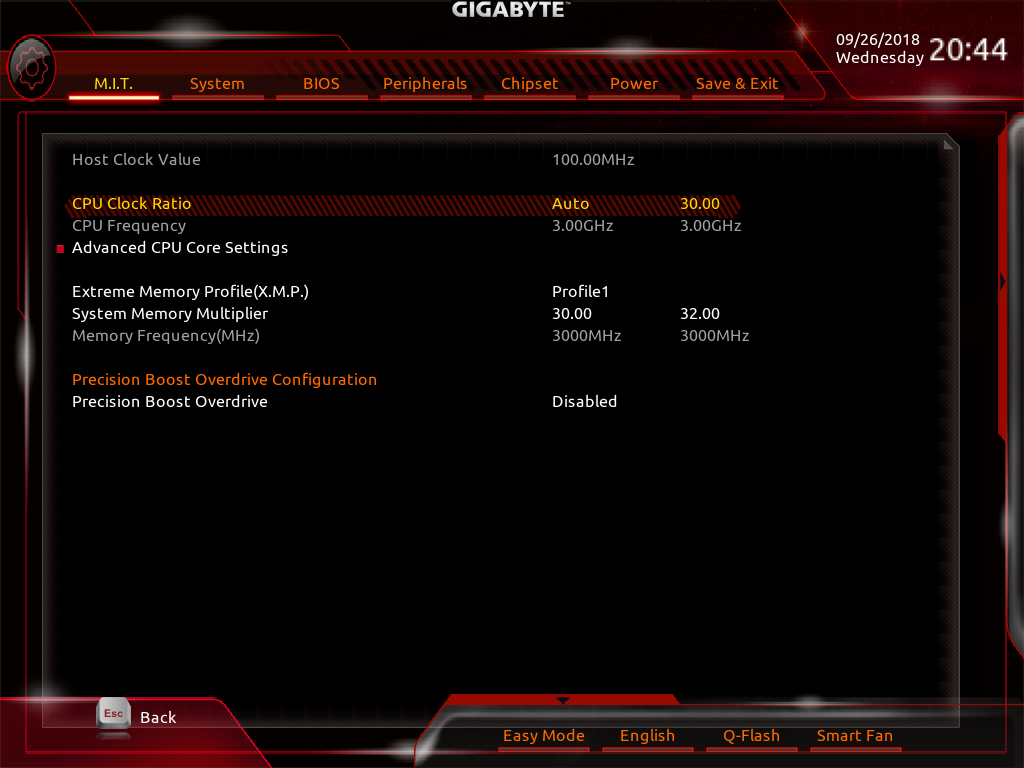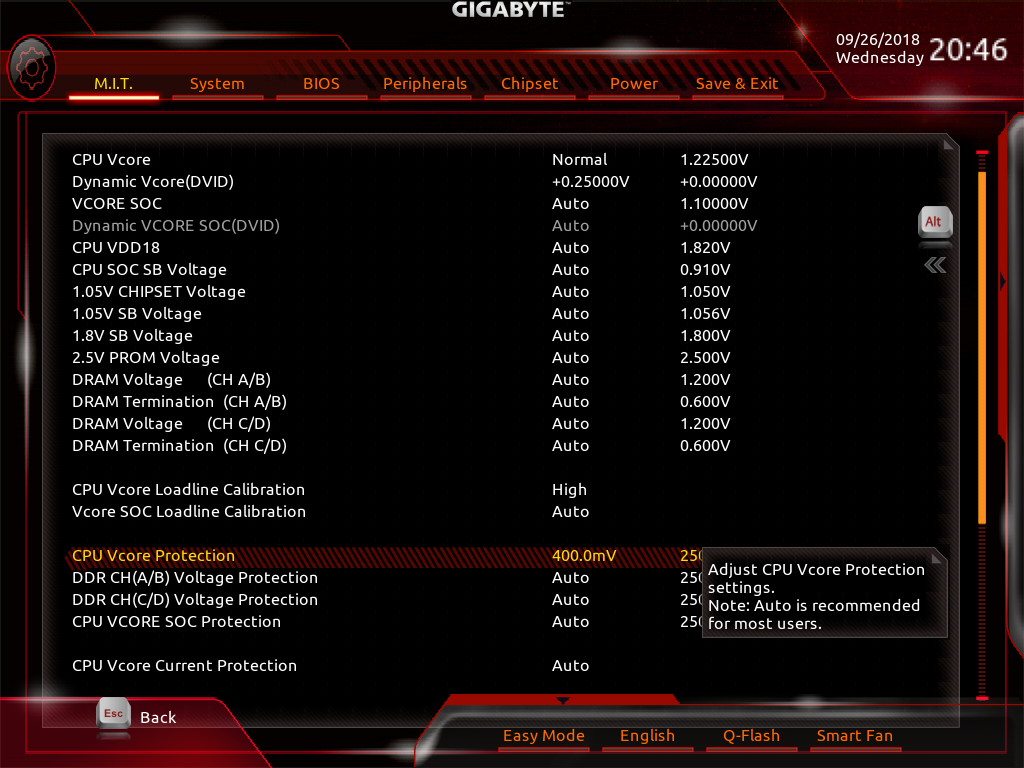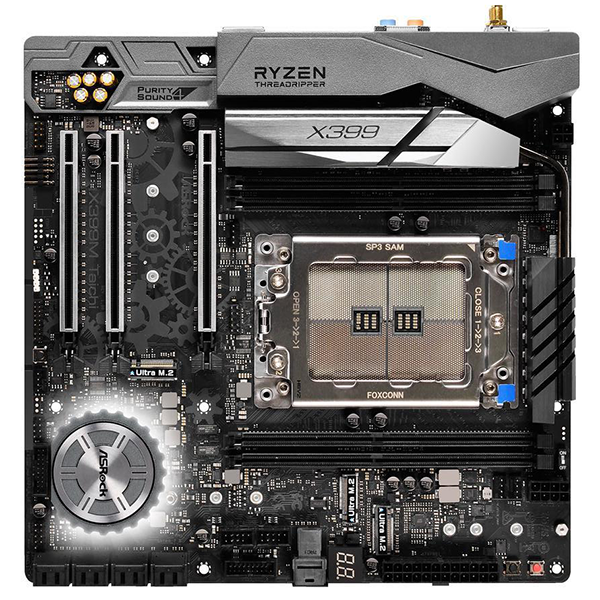Gigabyte X399 Aorus Xtreme Review: Overclocking Without Compromise
Why you can trust Tom's Hardware
UEFI and Test Configuration
UEFI – Same ‘ol X399 Adds Support For 2000 Series





If we were to rank overall UEFI experience against the main motherboard competitors, Gigabyte would land in a startling fourth place with its lackluster looks and at times difficult-to-navigate menus (at least on AMD versions). However, ithe UEFI here is functional and provides a consistency that some vendors do tend to lack across their motherboard stack. For our previous analysis of Gigabyte’s X399 UEFIs, feel free to dig into some of our previous articles.
With the introduction of the Threadripper 2000 series processors, newer versions of AGESA are needed to support this silicon. And with our testing we used the F4d version (which has now been replaced with F5c and AGESA 1.1.0.2), so your mileage may vary. Largely, the main M.I.T. menus remain unchanged and most of our previously used features still live in the same respective subtrees as our prior reviews. The Advanced Frequency Settings menu hosts most of the multipliers for both CPU and memory, and Advanced Memory Settings opens up the whole menu of timing options for DRAM.




But what makes this board Xtreme? Given the emphasis on power delivery and cooling, we went ahead and dialed up some of our favorite tweakable settings to their limits to see how far the UEFI would let you go. CPU clock speeds are settable to an impressive 6.375 GHz on the top end and DDR4-4400MHz is the fastest canned frequency for DIMM sticks. Along with base multipliers, impressive voltage settings and protections are available on this board, with programmable loadline, separate voltage and current protection settings, and phase control settings for switching rates and modes for how the regulators react to dynamic loads.





For the users who don’t want to overclock the old-school, Precision Boost Overdrive (PBO) is enabled on 2000 series Threadripper chips, and this motherboard boasts some impressive limits as well. For more information about what these values mean, look to our overclocking section below or the motherboard section of our 2990WX review. Base settings for PBO can be adjusted from the M.I.T. Advanced Frequency Settings menu and can be either Auto, Disabled, Enabled, or Manual.
The Manual menu enables us to bypass the board’s default PPT, TDC, and EDC values for power, temperature, and current limits respectively. Additional PBO settings can be found in the Peripherals menu, where the PBO Scalar can be set, and we found that the maximum value we could set was 5,000. Lastly, jumping back from the PBO configuration, we can adjust the TDP limit in our UEFI to a maximum of 10000W and a temperature limit of 1000C. Granted, I don't understand where these limits apply in AMD’s grand flow-chart of power management, but know that those knobs are there for tinkering.
Test System Configuration
| Sound | Integrated HD audio |
| Network | Integrated gigabit networking |
| Graphics Driver | GeForce 399.24 |
Comparison Products
Benchmark Settings
| Synthetic Benchmarks & Settings | |
| PCMark 8 | Version 2.7.613Home, Work, Storage, Applications (Adobe & Microsoft) |
| 3DMark 13 | Version 4.47.597.0Test Set 1: Skydiver, 1920x1080, Default PresetTest Set 2: Firestrike, 1920x1080, Default PresetTest Set 3: Firestrike Extreme, 2560x1440 Default Preset |
| SiSoftware Sandra | Version 2016.03.22.21CPU Arithmetic, Multimedia, Cryptography, Memory Bandwidth |
| DiskSPD | 4K Random Read, 4K Random Write128K Sequential Read, 128K Sequential Write |
| Cinebench R15 | Build RC83328DEMOOpenGL Benchmark |
| CompuBench | Version 1.5.8Face Detection, Optical Flow, Ocean Surface, Ray Tracing |
| Application Tests & Settings | |
| LAME MP3 | Version 3.98.3Mixed 271MB WAV to mp3: Command: -b 160 --nores (160Kb/s) |
| HandBrake CLI | Version: 0.9.9Sintel Open Movie Project: 4.19GB 4K mkv to x265 mp4 |
| Blender | Version 2.68aBMW 27 CPU Render Benchmark, BMW 27 GPU Render Benchmark |
| 7-Zip | Version 16.02THG-Workload (7.6GB) to .7z, command line switches "a -t7z -r -m0=LZMA2 -mx=9" |
| Adobe After Effects CC | Release 2015.3.0, Version 13.8.0.144PCMark-driven routine |
| Adobe Photoshop CC | Release 2015.5.0, 20160603.r.88 x64PCMark-driven routine (light and heavy) |
| Adobe InDesign CC | Release 2015.4, Build 11.4.0.90 x64PCMark-driven routine |
| Adobe Illustrator | Release 2015.3.0, Version 20.0.0 (64-bit)PCMark-driven routine |
| Game Tests & Settings | |
| Ashes of the Singularity: Escalation | Version 2.50.28527High Preset - 1920x1080, Mid Shadow Quality, 1x MSAACrazy Preset - 1920x1080, High Shadow Quality, 2x MSAAHigh Preset - 3840x2160, Mid Shadow Quality, 1x MSAACrazy Preset -3840x2160, High Shadow Quality, 2x MSAA |
| F1 2015 | 2015 Season, Abu Dhabi track, Rain1920x1080 - UltraHigh Preset, 16x AF3840x2160 - UltraHigh Preset, 16x AF |
| Metro: Last Light Redux | Version 3.00 x64High Quality, 1920x1080, High TesselationVery High Quality, 1920x1080, Very High TesselationHigh Quality, 3840x2160, High TesselationVery High Quality, 3840x2160, Very High Tesselation |
| The Talos Principle | Version 2672521920x1080 - Medium Preset, High Quality, High Tesselation, 4x AF1920x1080 - Ultra Preset, VeryHigh Quality, VeryHigh Tesselation, 16x AF3840x2160 - Medium Preset, High Quality, High Tesselation, 4x AF3840x2160 - Ultra Preset, VeryHigh Quality, VeryHigh Tesselation, 16x AF |
Up today for comparison are only two brands, Gigabyte and ASRock. But these boards have a purpose in our charts. The Aorus Xtreme is obviously what we’re interested in, but we need the X399M and X399 Professional Gaming from ASRock for their 2990WX data on our recently updated testbed. Also, we are throwing the Gigabyte X399 Aorus Gaming 7 into the ring due to how pleased we were with its performance. Another angle for analysis: How do the top-tier boards we’ve reviewed (ASRock Pro Gaming and Gigabyte Xtreme) compare? There's a lot to unpack, so let’s get started.
MORE: Best Motherboards
Get Tom's Hardware's best news and in-depth reviews, straight to your inbox.
MORE: How To Choose A Motherboard
MORE: All Motherboard Content
Current page: UEFI and Test Configuration
Prev Page Intro and Product Description Next Page Benchmark, Power and Thermal Results-
auraspeed Forgive my ignorance, as I'm more familiar with the current landscape of Intel Z390 VRM's, but doesn't a 10+3 phase seem extremely low for this level of wattage? Especially considering it's supposed to be an XOC board?Reply
Compared to the VRM's on Gigabyte's Z390 motherboard lineup, this motherboard's VRM would place it firmly at (or very close to) the bottom of the stack. -
rantoc About bloody-time 10GbE comes for real, heck 1GbE is overtaken by wireless (under good circumstances...) / usb. The 10GbE over copper tp (10GBASE-T) standard was done 2006... nice to see it come to consumers some 13 years later... *sigh*Reply -
TheTerk ehh, it's comparable to Asus' offering, and the MSI MEG appears to be a little over the top. With Asus, you get fewer phases but they're driven by a stronger MOSFET, and the MSI board uses more phases which are doubled. To your point, the Gigabyte is a doubled four phase, which _could_ be underserving larger processor, but our overclocking was not gated by power delivery.Reply
Would y'all like to see more board dissection/analysis? we can definitely do it and we try to take shots of the regulators when we can. -
hardarse7 I have this board. It is running my 1950x at 4.05ghz on all cores nice and stable. It peaks at 67degC at 1.2875v on Noctua's air cooler.Reply -
kirakishin hello HARDARSE7 ,Reply
i would like to know your setup please ?. iam looking for a motherboard + memory (16 or 32gb per module) for my 1950x.
thanks


